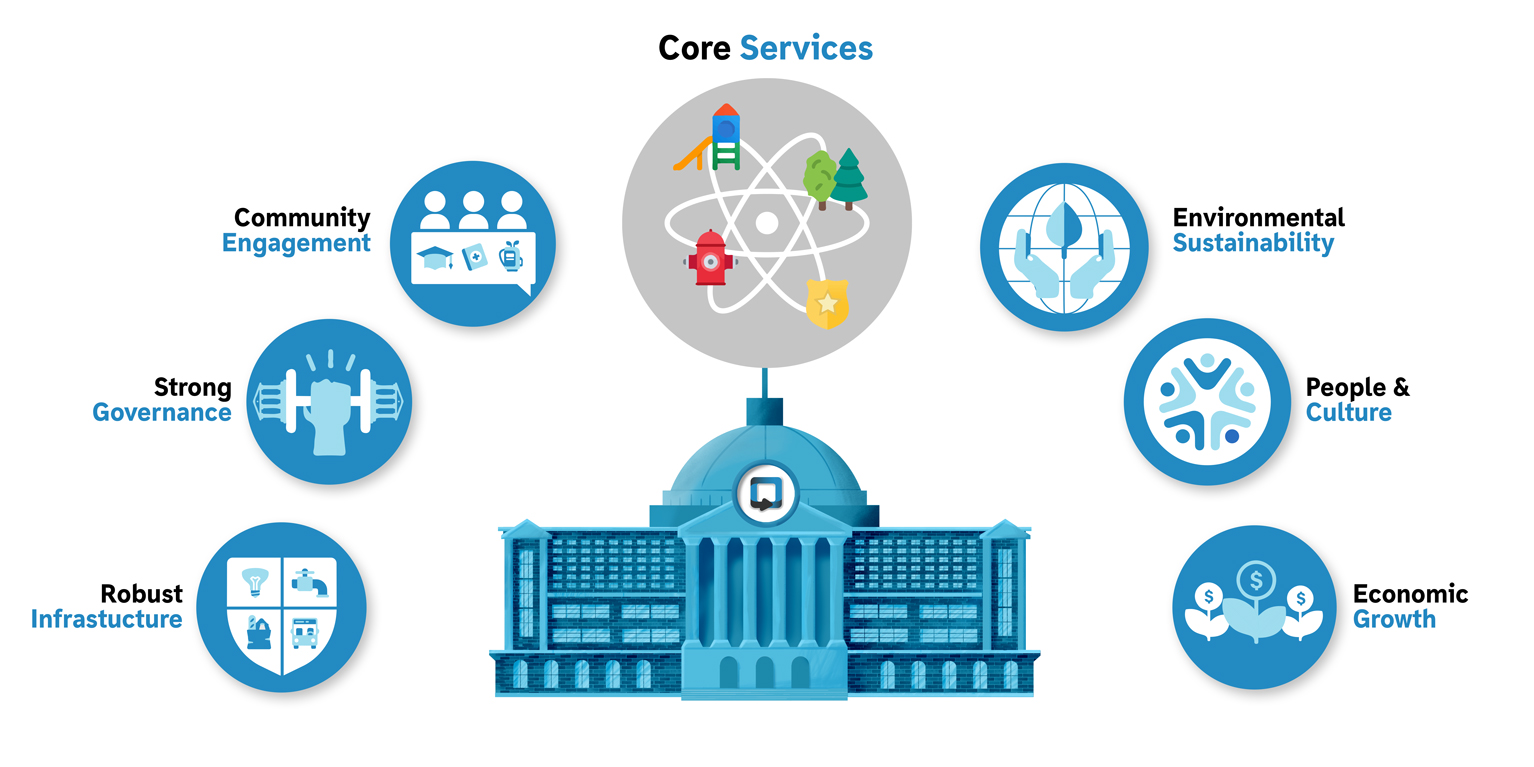The Do’s and Don’ts of Strategic Planning for Local Governments
Strategy planning is not just for corporations. At StrategyBlocks, we work with a wide number of municipal and county governments across the US to help organize, visualize and execute on their strategic plans for their communities.
Often, these entities don’t have dedicated individuals with a sole purpose of managing strategy. They are deeply committed, however, to improving their communities and creating a more seamless process for citizens and government to work together to achieve goals. This makes careful and transparent strategic planning an essential element to success and allows for multiple stakeholders to participate.
One of the significant challenges facing governments today is trying to navigate what feels like an unknown future. COVID-19 was a particularly chaotic time, and local governments discovered a new, crucial need in helping citizens prepare and manage the crisis. Many standard activities ground to a halt, but other, more imperative measures took their place. For most governments the focus narrowed to managing critical infrastructure and communicating with constituents.
As we collectively transition into a new, post-pandemic world, governments have the chance to return to some pre-COVID normalcy, but with new directions and goals. The future may still seem a bit hazy, which is why thoughtful strategic planning and execution is more necessary than ever.
As city and county governments continue to shoulder a heavy burden and services and communication become more hyper-local, leaders need to tighten the focus of strategic initiatives and have a well-defined plan to monitor and manage results.
Our latest Research Report, focused on proven practices for strategic planning, design, execution and reporting at the government level, identifies key areas of leadership style that are hallmarks of success. These include:
Creating environments that allow for experimentation
Allowing for a culture of experimentation in a government organization can seem nearly impossible. Change doesn’t happen quickly – there is a reason the word bureaucracy is most often associated with ‘red tape.’ Yet it is within an open culture of experimentation, one that prizes new ideas and doesn’t fear failure, where successful strategic patterns can emerge.
No matter the size of your local government this culture can exist, it simply takes strategic vision and confidence in knowing that results are being monitored and addressed. Building a visual strategy is a key element to creating a culture where experimentation can thrive, because it allows for new ideas and approaches while creating boundaries to help steer toward success.
Increasing the levels of interaction and communication inside the organization
This is a critical component to strategic execution. Too often we see closed-door, siloed work environments where stakeholders and decision makers are limited to only a few high level executives, or where departments largely keep to themselves. This stymies strategic process and can limit input from individuals who have the greatest insight – such as those that work directly with citizens. The right strategic plan opens doors within the organization which can create better pathways for achieving broader goals.
Deploying methods that can help generate ideas
By seeking to build a culture of experimentation and improving internal communication, you are two significant steps closer to creating an environment that fosters new ideas. Strong leaders encourage debate within healthy boundaries and they are quick to reward success and honor lessons learned from failure.
There is no one right way to accomplish something, but organizations can often forget this principle in favor of focusing on what has always worked, or what is easiest. By keeping an open dialogue and encouraging freedom of thought, new ideas can germinate which can prove highly beneficial in tackling challenges.
Our latest Research Report dives deeper into these key elements of leadership success and explores how municipal and county governments can create a strategic plan that drives growth and change, improves organizational performance and successfully builds a bridge between federal government initiatives and citizen understanding and involvement.
Download the report here and contact us for a free demo and to learn more about how we can help your organization excel at meeting its goals.




Leave A Comment